Contents
Plinth — it is an important detail of the interior, which not only protects the walls from damage, but also gives completeness to any room. A correctly chosen plinth can emphasize the style of your interior and create a harmonious look. In this article, we will consider the main aspects of choosing a plinth.
Types of plinths
Wooden plinths
- Advantages: natural material, aesthetic appearance, environmental friendliness.
- Disadvantages: sensitivity to moisture, high price.
MDF plinths
- Advantages: affordable price, wide selection of colors and textures, resistance to deformation.
- Disadvantages: may not withstand excessive humidity.
Plastic plinths
- Advantages: resistance to moisture, ease of installation, variety of colors.
- Disadvantages: less natural look, can look cheap.
Aluminum plinths
- Advantages: modern appearance, high resistance to mechanical damage and moisture.
- Disadvantages: high price, limited choice of design.
How to choose the color of the plinth
Matching the color of the walls
Plinth in the color of the walls creates the effect of a seamless transition and visually increases the space. This option is well suited for small spaces.
Floor color matching
Plinth in the color of the floor creates a complete look and emphasizes the floor material. Suitable for classic interiors.
Contrast plinths
A contrasting plinth can become an accent in the interior. This option works well in modern styles such as loft or minimalism.
Plinth height
Low plinths (5-7 cm)
Suitable for standard rooms with a ceiling height of up to 2.5 meters. They look good in small rooms.
Medium plinths (7-10 cm)
A universal option for most rooms. Suitable for ceilings up to 3 meters high.
High plinths (10-15 cm and more)
Ideal for spacious rooms with high ceilings. They are used in classic and luxurious interiors.
Plinth installation
Surface preparation
- Make sure the walls and floor are clean and level.
- If necessary, repair the surfaces before installation.
Choose mount
- Glue: suitable for light plinths and flat surfaces.
- Self-tapping screws: provide reliable fastening, but require additional processing of the holes.
- Special fasteners: often used for plastic and aluminum plinths.
Montage
- Measurement and cutting: Carefully measure the length of the walls and cut the plinth at the appropriate angle.
- Attachment: Attach the plinth to the wall using the chosen attachment method.
- Finishing: If necessary, sand and repaint the mounting points to achieve the perfect look.
Interesting facts about plinths
- The first plinths were used in ancient Rome to protect the lower part of the walls from damage.
- U suchaplinths can be equipped with built-in LED lamps to create additional lighting.
- Using plinths with special channels for cables allows you to hide the wiring and preserve the aesthetics of the interior.
Conclusion
The choice of plinth depends on the style of your interior, the material of the floor and walls, as well as personal preferences. A correctly selected and installed plinth will not only protect your walls, but also add completeness and harmony to your home. Regardless of the material, color or height of the plinth you choose, it is important to remember about quality installation and care for it.












































































Write a comment